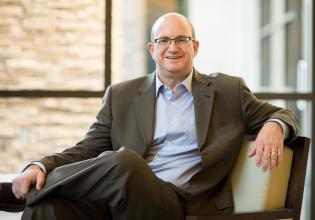
New York District Court Dismisses Biosimilar Applicant’s Declaratory Judgment Action for Lack of Jurisdiction
In a recent lawsuit between a biosimilar applicant and a patent owner, Judge Paul A. Crotty (S.D.N.Y.) relied on Sandoz Inc. v. Amgen Inc., 3:13-cv-02904-MMC (N.D. Cal. Nov. 12, 2013) to deny declaratory relief for the biosimilar applicant, despite the applicant’s substantial investment and pending FDA application.
According to the opinion, Plaintiffs Celltrion Healthcare Co., Ltd. and Celltrion Inc. (“Celltrion”) spent several years and significant resources developing Remsima, a biosimilar version of Remicade®, a drug used to treat, inter alia, Crohn’s disease. Celltrion’s Remsima product has been approved in 47 countries, and Celltrion began the process of obtaining FDA approval to market the drug in the U.S. in July 2013. The FDA accepted Celltrion’s IND application in November 2013, and Celltrion anticipates FDA approval of the product in early 2015.
Defendant Kennedy Trust for Rheumatology Research (“Kennedy”) is the owner and licensor of three patents claiming methods of treating rheumatoid arthritis through the administration of a combination of an anti-TNFα antibody and methotrexate (a known rheumatoid arthritis drug). Janssen Biotech, Inc. is a licensee of these patents and received FDA approval for Remicade®.
Celltrion initiated a declaratory judgment action against Kennedy in the Southern District of New York to invalidate Kennedy’s patents prior to entering the U.S. market with Celltrion’s biosimilar product. Kennedy moved to dismiss the complaint.
The Court granted Kennedy’s motion to dismiss on two grounds. First, the Court held that it lacked jurisdiction because Celltrion failed to establish the existence of an actual case or controversy. Despite substantial investment, foreign approvals, and diligent engagement with the FDA, the Court decided that the complicated FDA procedures and the unpredictable nature of FDA approvals rendered Celltrion’s alleged time frame for approval speculative, noting that “Celltrion would have to become the first ever biosimilar approved by the FDA ….” Thus, the Court held that Celltrion’s preparations are “simply not at a stage that can support a declaratory judgment action.” See Op. at 3. Moreover, the Court determined that Kennedy had failed to express a clear intent to pursue any infringement claims against Celltrion, precluding the existence of an actual case or controversy. See Op. at 4.
The Court also went on to state that, even if Celltrion had overcome the above failings, it would still decline to hear the case in view of the statutory framework set forth in the BPICA. See Op. at 4. Citing the Northern District of California’s opinion in Sandoz v. Amgen, which has since been affirmed by the Federal Circuit, the Court emphasized the availability and importance of the administrative dispute resolution mechanisms established by the BPCIA, specifically designed for disputes arising out of the manufacture and marketing of biosimilars. The Court pointed to Celltrion’s failure to allege the insufficiencies of relief under the BPCIA and determined that the statute provided the appropriate pathway to resolve patent disputes:
The BPCIA purposefully keys its disputes resolution procedures to the occurrence of certain events on the path to FDA approval. Celltrion has failed to show why this carefully crafted and well-timed procedure should be avoided here. Should Celltrion have a ripened patent dispute against Kennedy once it properly engages in the BPCIA dispute resolution procedures and once it is further along the pathway towards approval of its biosimilar, Celltrion may litigate those issues at that time.
Finally, the Court noted that even though the “BPCIA envisions the dispute resolution process to involve the applicant and the reference product sponsor,” the fact that Kennedy was not the reference product sponsor (but only the patent owner) was insufficient to remove the present scenario from the realm of the BPCIA. The Court noted that “the BPCIA does provide for a level of involvement by the patent owner, see 42 U.S.C. § 262(1)(3)(A), (l)(1)(B)(iii)." See Op. at 5.
This decision demonstrates the continued unwillingness of courts to allow companies in the biopharma space, especially those that have not yet filed a 351(k) biosimilar application, to engage in litigation before first proceeding through the procedures prescribed by the BPCIA. Given the Federal Circuit’s recent ruling affirming the district court in Sandoz v. Amgen, biosimilar applicants are more likely to pursue avenues outside of court to challenge the validity of patents, such as reexamination or inter partes review proceedings at the U.S. Patent and Trademark Office (PTO). Successful validity challenges before the PTO often allow applicants to gain more clarity on the patent landscape prior to undertaking significant investment developing a biosimilar product. Similarly, while the present decision suggests that patent owners may be shielded from a declaratory judgment action prior to the initiation of the BPCIA process, they would be wise to review and prepare their portfolios for challenges at the PTO.
For more information on patent strategies under the Biosimilars Act, please contact our biosimilars team.






